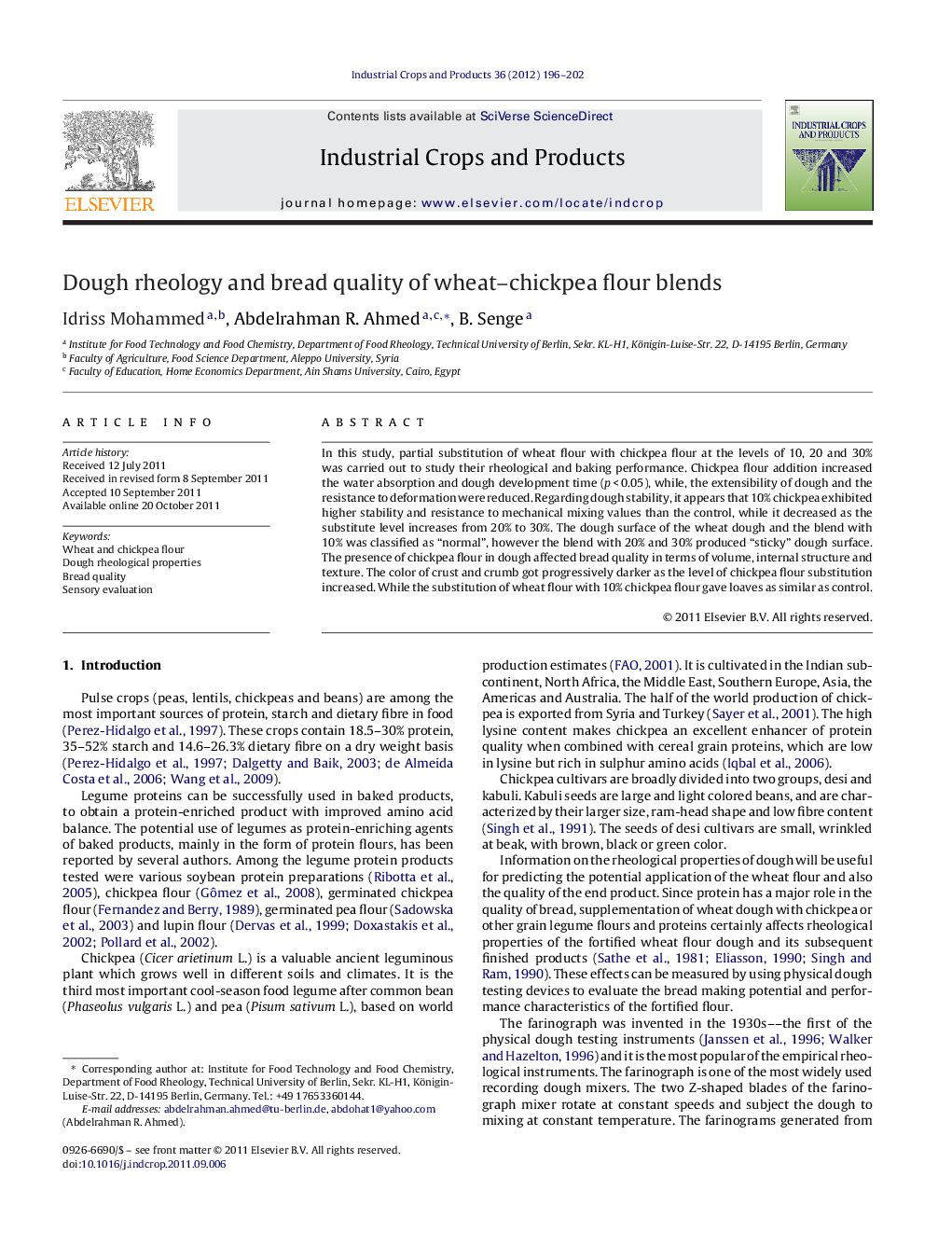| Article ID | Journal | Published Year | Pages | File Type |
|---|---|---|---|---|
| 4514372 | Industrial Crops and Products | 2012 | 7 Pages |
In this study, partial substitution of wheat flour with chickpea flour at the levels of 10, 20 and 30% was carried out to study their rheological and baking performance. Chickpea flour addition increased the water absorption and dough development time (p < 0.05), while, the extensibility of dough and the resistance to deformation were reduced. Regarding dough stability, it appears that 10% chickpea exhibited higher stability and resistance to mechanical mixing values than the control, while it decreased as the substitute level increases from 20% to 30%. The dough surface of the wheat dough and the blend with 10% was classified as “normal”, however the blend with 20% and 30% produced “sticky” dough surface. The presence of chickpea flour in dough affected bread quality in terms of volume, internal structure and texture. The color of crust and crumb got progressively darker as the level of chickpea flour substitution increased. While the substitution of wheat flour with 10% chickpea flour gave loaves as similar as control.
► Effects of chickpea flour on dough properties and bread quality was tested. ► Substitution of 10, 20 and 30% wheat flour with chickpea flour was done. ► Addition of 20% and 30% chickpea produced sticky dough and affected bread quality. ► While, 10% chickpea flour gave dough and loaves as similar as control.
